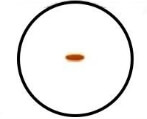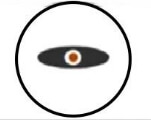What is Polarization Maintaining Optical Fiber?
What is Polarization Maintaining Optical Fiber?
Blog Article
What is Polarization Maintaining Optical Fiber? Polarization maintaining fiber is a special type of optical fiber. It overcomes the influence of environmental factors on the polarization state in the optical fiber during transmission by increasing the inherent birefringence of the optical fiber. It keeps the polarization state of the light wave transmitted in the optical fiber unchanged. In the field of optical fiber communication, it can improve the stability and communication capacity of the optical transmission system. In the optical fiber sensing system, it can significantly reduce the error caused by polarization coupling in the optical path.
Types of polarization maintaining optical fiber

Polarization-maintaining fiber optic generally includes geometric polarization-maintaining fiber and stress-maintaining fiber. The structure of geometric polarization-maintaining fiber is mainly elliptical core polarization-maintaining fiber, which is used in some special application fields.
Stress-maintaining fiber mainly includes panda-type, elliptical, butterfly-type and bowtie-type polarization-maintaining fiber.
Excellent performance in polarization-maintaining fiber – panda-type polarization-maintaining fiber

Panda-type polarization-maintaining fiber has natural advantages in terms of optical fiber performance. Whether it is birefringence, geometric characteristics, structural symmetry or longitudinal uniformity of optical fiber, it has natural advantages. At the same time, the manufacturing process of panda-type polarization-maintaining fiber does not need to be completed in one step. Independently manufacturing each component can effectively control the structure and composition of the optical fiber. It can ensure that each preform can be drawn into a uniform polarization-maintaining optical fiber product of tens of kilometers or even more than one hundred kilometers. It is suitable for mass production. Therefore, panda-type polarization-maintaining optical fiber is commonly used in the market.
Important parameters in polarization-maintaining optical fiber

1. Fast axis and slow axis
Two stress zones with different expansion coefficients from the fiber cladding are made on both sides of the single-mode fiber core. During the drawing process of the fiber preform, the fiber is rapidly cooled from high temperature to a lower temperature. During the cooling process, the two stress zones shrink, and their shrinkage is hindered by the surrounding quartz. The fiber core is pulled outward along the direction of the line connecting the two stress zones (x-axis), and there is compressive stress in the direction orthogonal to it (y-axis). As a result, stress birefringence is generated in the fiber core. Two mutually orthogonal principal axes are formed.
The refractive index in the two principal axis directions is different. In the direction where the stress is applied, the effective refractive index of the fiber core is higher. The light transmission speed is slower and becomes the slow axis. It is the principal axis of the polarization-maintaining fiber. In the other direction, the light transmission speed is faster and is called the fast axis.
2. Beat length
The beat length of the polarization-maintaining fiber represents the length of the fiber transmitted by the composite polarization state of the transmitted light in the polarization-maintaining fiber jumper to complete a cycle change. Physically, the beat length reflects the fiber length Lp corresponding to the phase difference between the two linear polarization modes of the fundamental mode changing from 0 to 2π. The shorter the beat length, the more resilient the fiber is to the irregular polarization effect. The stronger the fiber’s ability to maintain polarization of linearly polarized light.
3.Extinction ratio
The extinction ratio is an indicator of the stability of the polarization state maintenance performance of the polarization-maintaining fiber.
When a beam of linearly polarized light is incident precisely along a certain optical axis of the polarization-maintaining device, a polarization mode will be excited on the orthogonal axis. The power ratio on the two orthogonal axes is the extinction ratio.
Application of polarization maintaining fiber

Optical devices made of polarization-maintaining fiber are widely used in polarization mode compensation, including polarization multiplexing communication, lasers, polarization optical devices, polarization sensors, fiber optic gyroscopes, fiber optic hydrophones, etc. Report this page